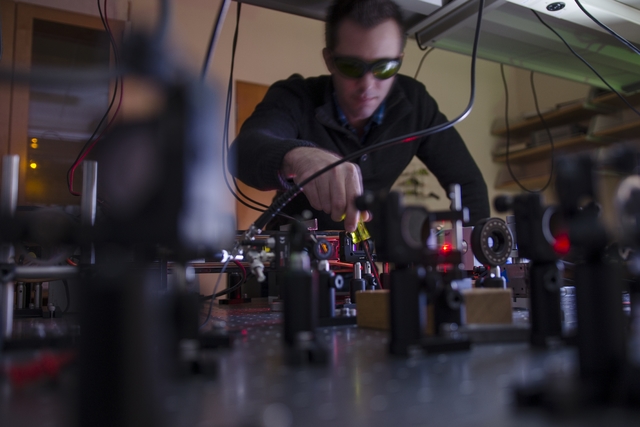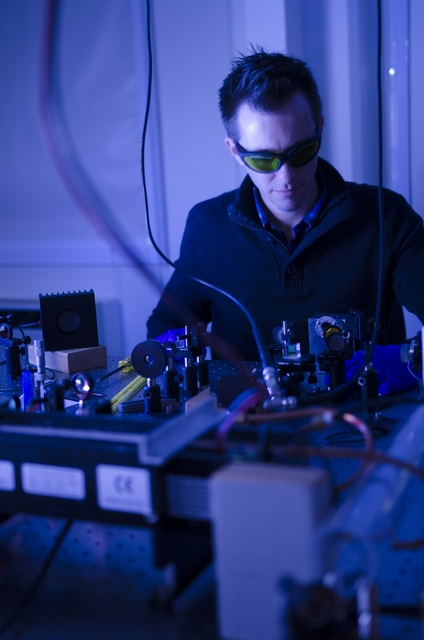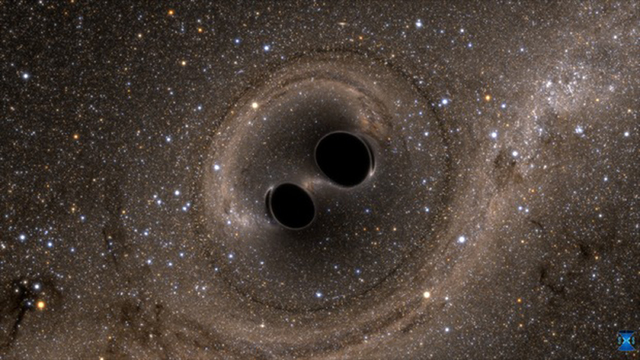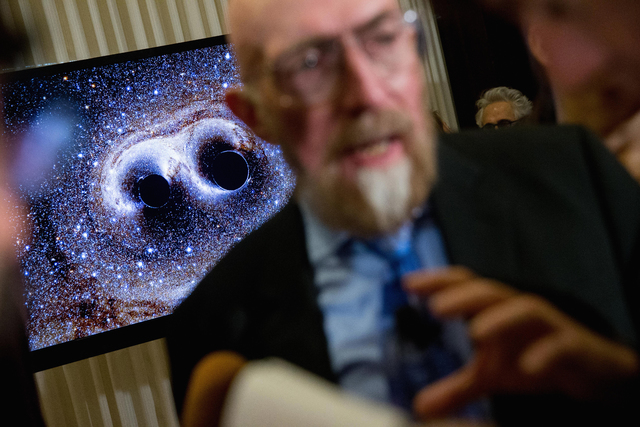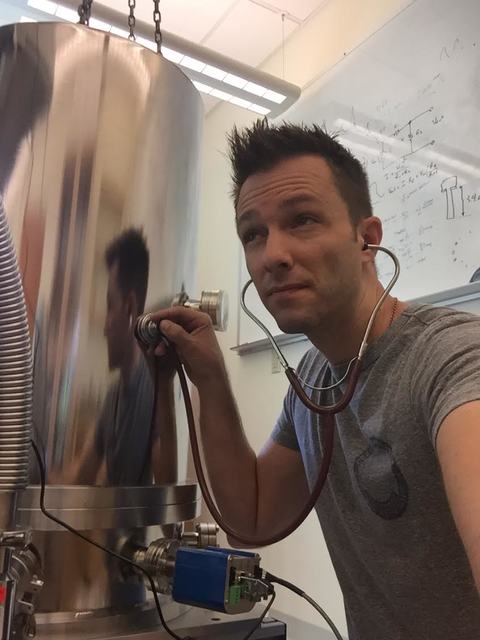KAILUA-KONA — Going all the way back to Albert Einstein’s theory 100 years ago, physicists have believed the fabric of space-time could actually be bent — say by something as megalithic as the collision of two black holes. ADVERTISING KAILUA-KONA
KAILUA-KONA — Going all the way back to Albert Einstein’s theory 100 years ago, physicists have believed the fabric of space-time could actually be bent — say by something as megalithic as the collision of two black holes.
For those 10 decades, the idea was only a theory.
But just last week, scientists announced that they had observed this cosmic shock wave for the first time, using an incredibly sensitive system of mirrors and lasers which picked up the disturbance of two black holes each 30 times the mass of the sun colliding at half the speed of light, a billion light years away.
The international scientific community has been quick to herald the discovery as one of the most significant in modern astronomy.
Turns out, one of the project’s scientists is a Konawaena High School graduate who has been living and breathing the research since 2006. He’s been part of the massive consortium of international scientists involved with the Laser Interferometer Gravitational-Wave Observatory since his graduate school days at the California Institute of Technology, one of the lead institutions on the LIGO project.
“It’s the first evidence of two black holes colliding ever observed,” said Greg Ogin, 34, who graduated from Konawaena in 1999.
There are a lot of things about the discovery that are exciting, said Ogin, now an assistant professor of physics at Whitman College in Washington state, where two of the ultra-sensitive mirrors in the project are located. He is researching ways to make a new generation of the gravitational wave detectors better and more sensitive through his study of how the devices interact with fluctuations in the natural environment.
It gets thick fast, but here’s how he describes gravitational waves:
Even though the waves caused an infinitesimal movement in the system of mirrors used to detect it last September, the waves cannot be called energy, Ogin said. The mirrors moved, but not by anything like our traditional notion of force.
Instead, Ogin explained, “the waves actually cause space itself to expand and contract all around us as they go by.”
That includes the atoms in your body.
Einstein himself, despite intuiting the presence of these waves, did not himself believe in 1915 that instruments could be made sensitive enough to measure them, Ogin said, speaking by cellphone during a road trip in Washington state.
Being a kid immersed in computer games and science courses, Ogin himself couldn’t have known he’d one day take part in vindicating Einstein’s hunch.
“We’re just really impressed with what he was able to get out of the public school system,” said Ogin’s father, who shares the same first name and lives in Keauhou.
Ogin started reading before he was 1 year old, was a National Merit Scholarship finalist at Konawaena and a state spelling bee champ, but wasn’t a straight A student and even shirked his homework, his mother, Cherrie Ogin said.
“He was interested in everything,” Cherrie Ogin said. “Unlike a lot of bright kids, he wasn’t driven by others. His own interests drove him.”
In school, Ogin was known for ripples rather than waves.
“Greg actually dropped by Konawaena briefly to say ‘hi’ awhile back when he was just starting his PhD program,” said Paul Daugherty, who taught the youth advanced placement calculus. “He was one of those quiet, highly effective students that are a joy to have in class. He asked the right kinds of questions, did his homework and tested at the top of his class. Was he a ‘geek?’ I think my answer would be a qualified yes.”
Ogin makes it back to the Big Island about once a year around Christmas. These days, he spends that time on the beach, trying to get his head out of his work. But it’s all-consuming.
Every time astronomers peered for the first time through different types of telescopes — be they X-ray or gamma-ray scopes — they discovered something new in the universe, Ogin said. The wave observation is poised to take this a leap further, spawning a new field of gravitational wave astronomy as it opens up another of our observational “senses,” he said.
“We’ve been looking out at the stars looking for light,” he said. “But we’ve been deaf to the ripples in space. This is the first time we’re able to use our ears.”
For years, astronomers and physicists have theorized that large black holes could be formed by the smashing together of smaller back holes, but there was a lack of observational data. Part of the trouble was that black holes do not emit any light for telescopes to pick up.
“We’ve answered an amazing question in astronomy: Could this be the way that big black holes are formed? The answer is yes,” Ogin said.
It’s really just the very, very beginning. Astronomers hope to use gravitational waves to study more collisions of massive celestial bodies, the makeup of super-dense neutron stars and the dynamics of supernovas, whose aspects are often blocked from the eye by dust and gas, but whose gravitational waves travel uninhibited.
“Now that we have made this discovery, what else are we going to see?” Ogin said. “What are we going to hear next?”






